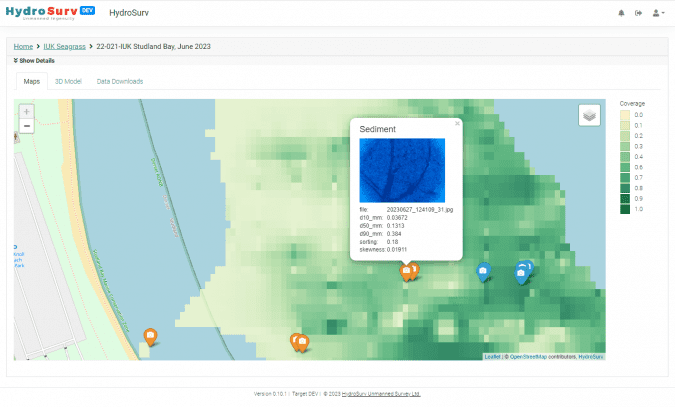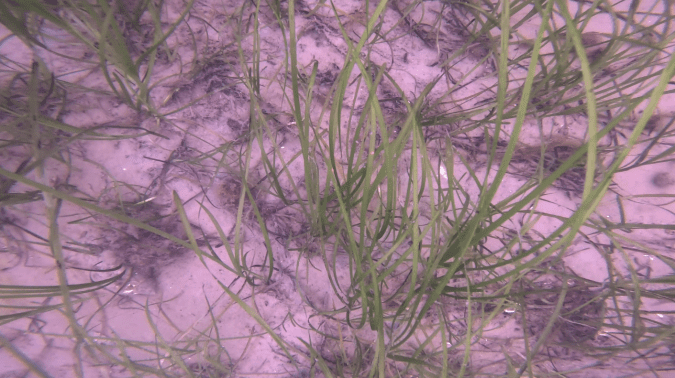TL;DR:
- Seagrass meadows, critical for marine biodiversity and carbon sequestration, face monitoring challenges.
- HydroSurv, with partners, deploys non-invasive, eco-friendly robots for data acquisition.
- Valeport VA500 altimeter enhances underwater positioning accuracy.
- University of Plymouth’s SeagrassNet algorithm detects and classifies seagrass with precision.
- New camera systems and data analysis tools improve monitoring capabilities.
- ‘EasySurv’ application simplifies data interpretation, democratizing access.
- Scaling deployment promises a sustainable future for seagrass conservation.
Main AI News:
Seagrass meadows, those submerged gems of our coastal ecosystems, are increasingly gaining recognition for their vital role in marine biodiversity, carbon sequestration, and coastal protection. However, monitoring these essential habitats has long been a challenge, both in terms of cost and precision. In this era of environmental urgency, the convergence of robotics and deep learning offers a beacon of hope.
Seagrass meadows are not merely picturesque underwater landscapes; they are nature’s response to climate change and marine biodiversity loss. They serve as sanctuaries for marine life, purify seawater, stabilize the seabed, and excel even terrestrial rainforests in carbon sequestration. Their potential as a natural climate change solution has garnered significant attention.
Yet, the hurdle of sporadic and incomplete observations impedes the development of protection and restoration strategies for these ecosystems. Traditional monitoring methods heavily rely on divers, limiting spatial coverage and precision while straining budgets.
To bridge this knowledge gap and unlock the true potential of seagrass meadows, we need innovation. Enter non-invasive, budget-friendly robots. HydroSurv, in collaboration with the University of Plymouth and Valeport, introduced small, battery-powered uncrewed surface vessels (USVs) as a game-changing data acquisition platform. These USVs are agile, eco-friendly, and cost-effective.
The secret to their success lies in the Valeport VA500 altimeter, which is equipped with advanced digital signal processing techniques. These modifications allow for precise underwater positioning, which is crucial for seagrass monitoring. Since seagrass sites are typically shallow, a single-beam unit strikes the right balance between resolution and cost-effectiveness.
The innovation doesn’t stop there. The University of Plymouth’s deep learning algorithm, SeagrassNet, powered by recurrent neural networks, detects and classifies seagrass presence, elevation, and density with unprecedented accuracy. This transformative approach harnesses the full echo response, providing a wealth of data for analysis.
But innovation doesn’t stand still. With co-funding from Innovate UK and DEFRA, HydroSurv and the University of Plymouth have enhanced their robotic survey system. Two new underwater camera systems and an advanced profiling winch have been added to provide georeferenced, co-acquired datasets, enriching our understanding of seagrass sites.
The ground-truthing camera complements acoustic data with precise photographic reference, while a sediment analysis camera captures detailed seabed images. These additions, combined with data from hull-mounted sensors, offer a holistic view of seagrass health and sediment suitability for restoration efforts.
To make sense of this wealth of data, HydroSurv’s ‘EasySurv’ application plays a pivotal role. It allows practitioners to assess seagrass biomass, carbon sequestration potential, and more, without the need for specialized GIS skills. The goal is to democratize seagrass data, making it accessible to all involved in conservation and monitoring efforts.
As we look to the future, the aim is to scale the deployment of this groundbreaking technology. HydroSurv is actively collaborating with stakeholders to initiate large-scale pilot projects, promising a brighter, more sustainable future for our precious seagrass meadows.

Geolocated sediment analysis observations with metadata. Source: HydroSurv and University of Plymouth
Conclusion:
The integration of robotics and deep learning in seagrass monitoring represents a significant advancement for the environmental monitoring market. It offers efficient, cost-effective, and precise solutions, making it an attractive prospect for industries and organizations invested in coastal conservation and ecosystem management. This innovation not only enhances our understanding of seagrass ecosystems but also creates opportunities for market growth in the field of environmental monitoring technology and services.

